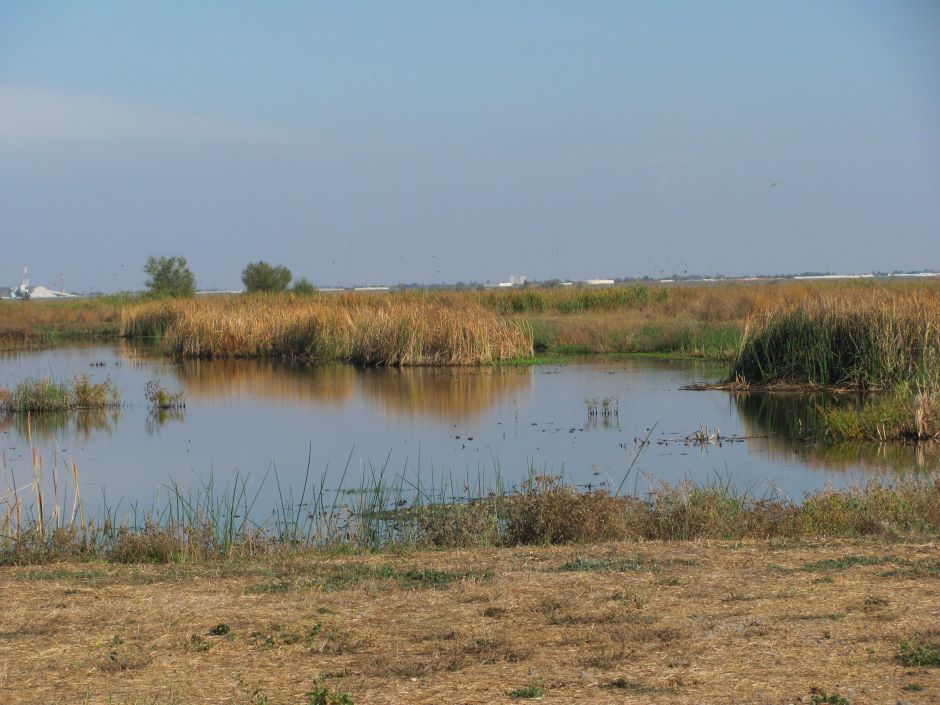Nigiri Project Looks At Floodplains To Support Salmon Populations
 The Yolo Bypass. Located between the cities of Sacramento and Davis, CA., just off Interstate 80. (Credit: Steve Martarano / USFWS)
The Yolo Bypass. Located between the cities of Sacramento and Davis, CA., just off Interstate 80. (Credit: Steve Martarano / USFWS)For many years, experiments conducted on the rice fields of Knaggs Ranch, in California’s Yolo Bypass, have yielded accelerated growth rates for juvenile Chinook salmon, according to a release from the University of California, Davis. The experiments are part of the Nigiri Project, an effort that looks to assess how floodplains can support healthy populations of salmon.
The name Nigiri comes from a type of sushi that features a slice of fish over a wedge of rice. Fittingly, the project aims to utilize out-of-season rice fields as potential fish habitats. The project hopes to restore salmon populations by reintroducing the fish to floodplains during the winter. During the summer, these fields will be used as rice fields.
Multi-Beneficial Use of Floodplains
Salmon aren’t the only species that could benefit from doubling up on field use–water birds and other fish populations can benefit from optimized habitats. For the Nigiri Project, “Maintaining farming on the largest floodplain of the Sacramento-San Joaquin Delta, the 60,000-acre Yolo Bypass,” is a large part of their mission.
Located on the Knaggs Ranch, in the northern section of the Yolo Bypass, Cal Marsh and Farm aim to provide 2,500 acres of winter floodplain habitat for Chinook salmon. The Nigiri Project cites the following as goals for the project:
- Create a multi-benefit revenue model that sustained agriculture in Yolo Bypass
- Maintain bypass flood control capacity
- To improve floodplain habitat for fish and waterbirds
- Increase bypass outflows to improve the food web
- Improve migration and reduce juvenile fish stranding
While parts of the Nigiri Project seek to restore the health of the floodplain and other infrastructure, it is also focused on the science of conservation. The Knaggs Ranch Experimental Agricultural Floodplain Habitat Investigation is a controlled project that analyzes best practices in agriculture with regard to salmon populations. The research was conducted during the winter of 2012-2013, wherein 53,000 juvenile salmon were reared on 25 acres of land. The study allowed researchers to test the behavior and growth rates of young salmon on agricultural floodplains.
Conclusion
The 2012 research revealed that, of the 10,000 salmon fry released in February, the group grew at one of the highest rates recorded in Delta salmon research. Over a period of only six weeks, one specimen grew from .92 grams and a length of 47 mm to 6.45 grams and a length of 81 mm. After six weeks, the floodplain was drained, releasing the juvenile salmon into the Delta and the Pacific Ocean.
The Nigiri Project continues to advocate on behalf of habitat and salmon health within the region, working to restore native salmon populations through a mutually beneficial partnership between agriculture and aquatic ecosystems. The project is now in its eighth year and has proven how effective its strategy can be for native ecosystems and populations. The project’s success can be attributed to the many federal, local, and private institutions that fund and contribute to the project.



Sara
February 23, 2023 at 12:34 pm
Very informative post, thanks for sharing.